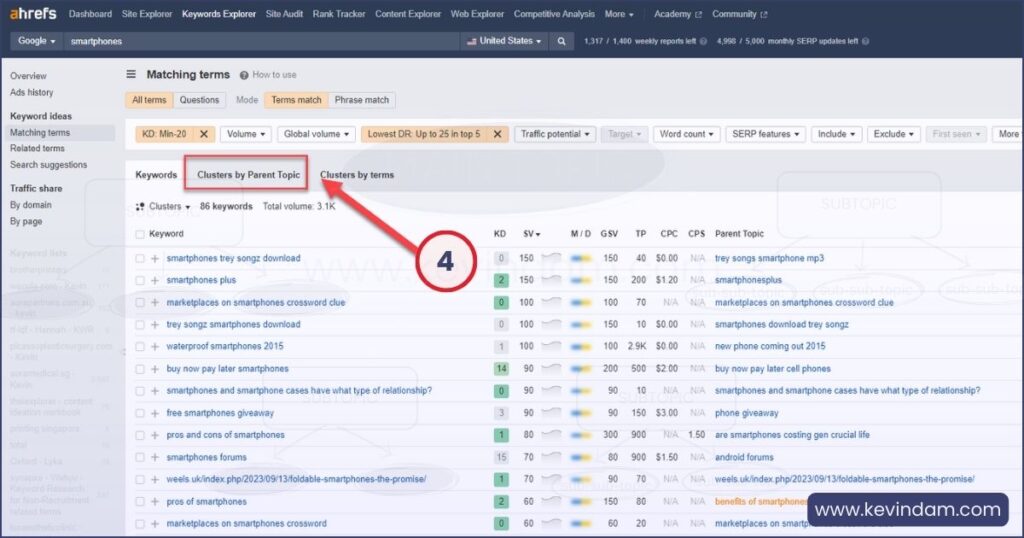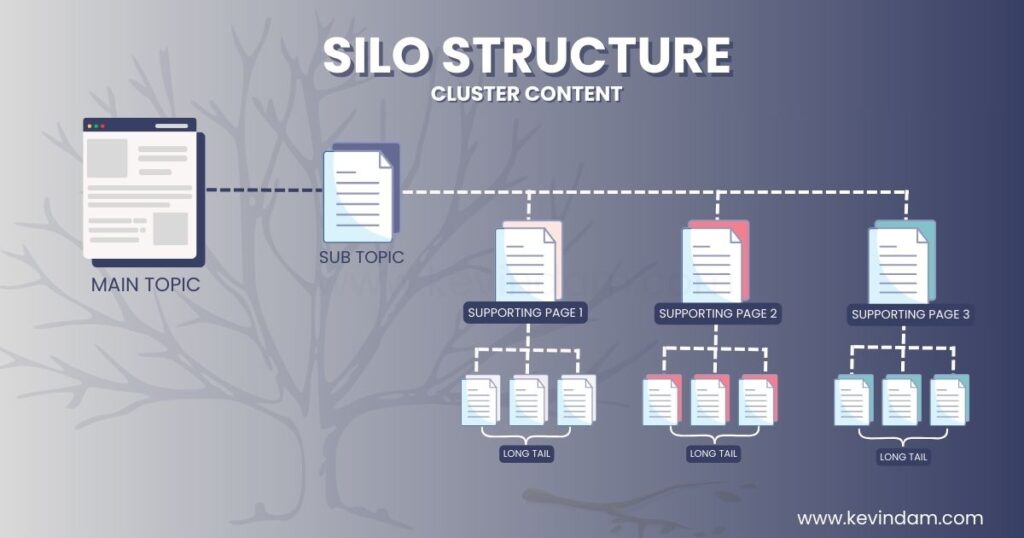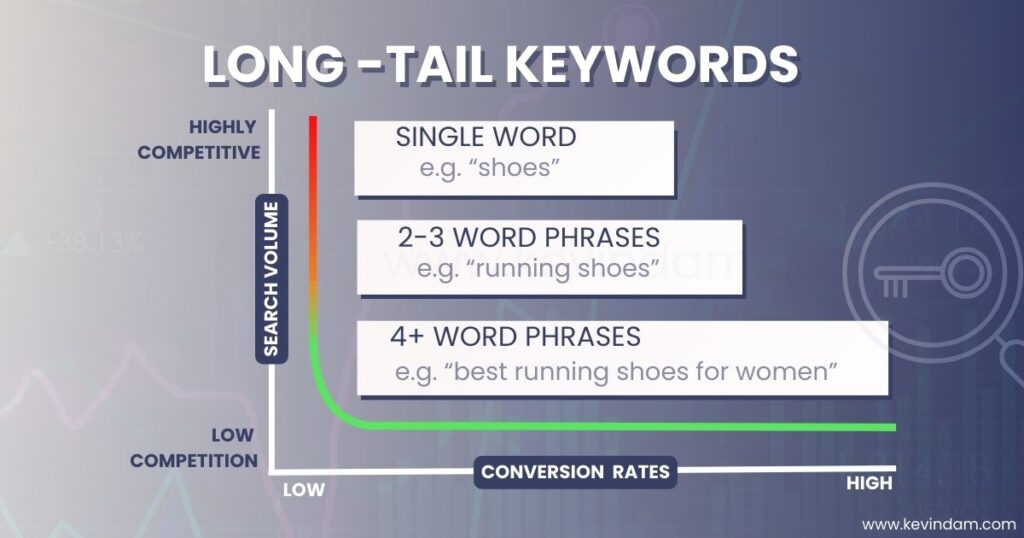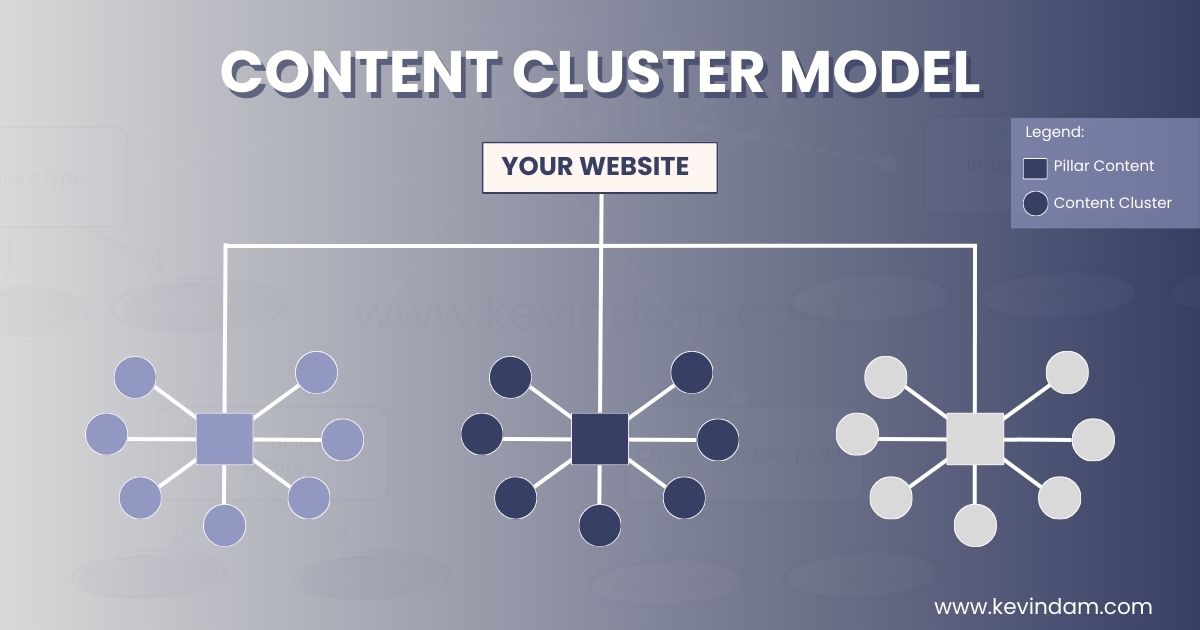
Last Updated July 22, 2024
Content Clusters: The Ultimate SEO Strategy for Website Optimisation
Content clusters are the answer to your SEO challenges. These are strategic ways to structure your website around topic areas, not just keywords, forming a pillar page that covers a core subject and related materials focused on specific subtopics.
This article discusses the benefits of using content clusters, tactics for grouping topics and using silos to group similar information.
What are Content Clusters?
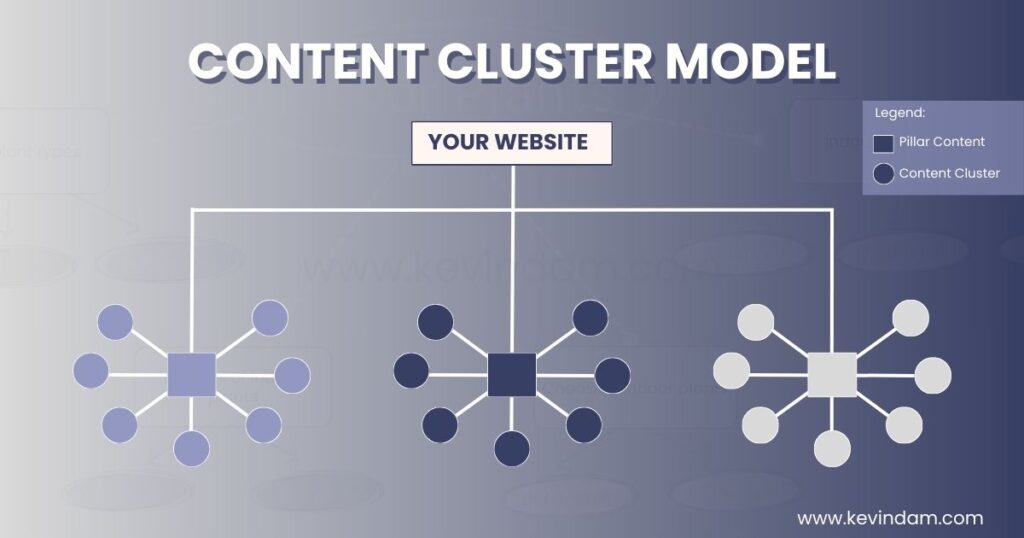
Content clusters are more than just a buzzword in the SEO world; they’re strategic game-changers. Content clusters consist of a pillar page that serves as the main hub for an overarching topic, with related cluster pages linking back to the pillar page. Implementing content clusters can positively impact SEO by signalling to search engines the depth and breadth of your content on a particular topic, thereby increasing the likelihood of improved search engine rankings.
Instead of prioritising keywords, content clusters reorganise website structures around comprehensive topics and subtopics instead of piecemeal content prioritising keywords.
Visualise your website as a library: the pillar page is like the main reference book on a broad subject, while the cluster content forms related chapters with deeper information. This interconnected approach allows search engines to discern not only keyword relevance but also topical authority and expertise.
By structuring content this way, websites can formally showcase the breadth and depth of knowledge surrounding a central theme while enhancing user experience.
Users aren’t searching for single unrelated keywords; they’re seeking complete answers to their questions. These well-structured clusters provide an efficient pathway for users to navigate through a wealth of related information, thereby increasing engagement and time spent on your site.
Consider the content clusters as a web of interlinked information interconnected like neurons in the brain, working together to reinforce and support the overarching pillar topic.
For instance, a website focused on health and wellness may have a pillar page centred on “Nutrition Basics,” linking to separate cluster pages discussing “Protein-Rich Foods,” “Vitamins and Minerals,” and “Healthy Cooking Methods.”
This enables users to seamlessly navigate from general overviews to more specific details without feeling lost or overwhelmed by the vast sea of information.
The harmonious relationship between a comprehensive pillar page and its interconnected cluster content not only enhances user experience but also improves a website’s authority and ranking potential.
Now, let’s explore how utilising content clusters can revolutionise information organisation for enhanced engagement and improved search engine visibility.
Benefits of Using Content Clusters for Information Organisation
Content clusters offer several important advantages that directly impact the user experience, search engine visibility, and authority establishment.
Enhanced User Experience
Content clusters streamline information, similar to a library where all books on a particular topic are placed together, making it easier to find everything needed in one spot.
This creates a seamless navigation experience, guiding visitors through interconnected pieces of information related to their interests.
Users can seamlessly move from one article to another, all linked by a central pillar page, making finding relevant information more convenient and holistic.
Improved Search Engine Visibility
Search engines nowadays favour websites that provide value in a comprehensive and organised manner.
Content clusters align perfectly with this preference. By organising content around specific topics, there’s an increased chance of ranking for a broader range of related keywords.
This ultimately drives more organic traffic to the website as search engines recognise the depth and breadth of knowledge on a particular subject.
Authority Establishment
Establishing authority in your domain is crucial for gaining trust with both users and search engines.
Creating comprehensive content clusters demonstrates expertise across a particular topic. By showcasing deep and well-organised information, it positions the website as an authoritative source—a trusted destination where users can find comprehensive and reliable information.
Content clusters enhance every aspect of managing web content—making it easier for users to find what they’re looking for, boosting visibility on search engines, and establishing credibility as an expert in the field. This results in an overall enhanced online presence.
With a clear understanding of the benefits that content clusters provide, let’s now explore effective tactics for grouping topics within clusters.
Tactics for Grouping Topics within Clusters
When it comes to creating effective content clusters, it’s not just about randomly grouping topics together. There are specific tactics and strategies that can help ensure your content is well-organised and optimised for search engines.
Keyword Research
Keyword research is critical. This involves using tools like Google Keyword Planner, SEMrush, or Ahrefs to identify core topics and associated subtopics.
1. Enter Seed Keyword.
2. Click “Matching Terms” to see all the generated keyword ideas.

3. Narrow it down to focus on more specific keywords to cluster.
4. When looking for low-competition keywords:
- focus on keywords with low Keyword Difficulty (KD) scores
- look for low Domain Rating (DR) sites in the top 5 for easier ranking
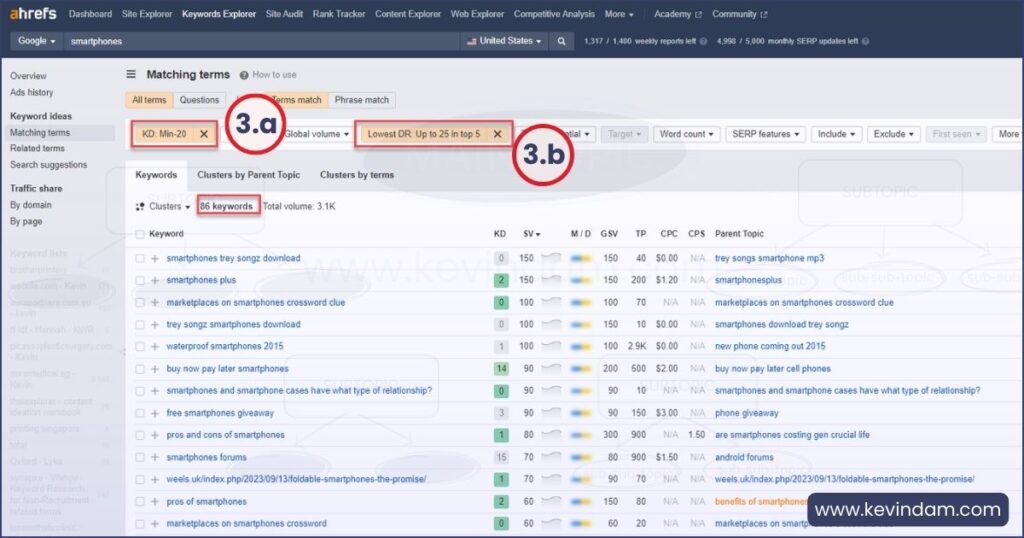
5. Lastly, click the “Clusters by Parent topic” tab while viewing your list of keywords to instantly cluster them.
By understanding user search intent and uncovering related keywords, you can strategically map out the content cluster in a way that aligns with what people are searching for.
Topic Mapping
Once you have your list of keywords, it’s time for topic mapping. This step involves organising the identified keywords into logical groups based on their relevance to the core topic.
This ensures a natural flow of information from the pillar page to the cluster content, making it easier for users and search engines to navigate and understand the relationships between different pieces of content.
Internal Linking
Now, onto the interlinking strategy. Developing a robust interlinking strategy is crucial for content clusters. This involves ensuring that the cluster content links to the relevant pillar page using keyword-rich anchor text. By doing so, you reinforce the topical authority of the pillar page and create a strong internal linking structure that signals to search engines the relationships between different pieces of content within the cluster.
Remember: These tactics are all focused on creating a cohesive structure for your content that aligns with user intent and search engine optimisation best practices.
By following these tactical steps for grouping topics within your content clusters, you can ensure that your content aligns with user search behaviour and search engine requirements, setting you up for success in the competitive online landscape.
Strategies for Clustering Similar Information
When it comes to clustering similar information, one of the most important steps is identifying overlapping topics.
These are the areas where different subtopics intersect or complement each other, allowing you to create content clusters that cover related information comprehensively.
For instance, if the main topic is “Healthy Eating,” subtopics like “Nutrition Essentials,” “Meal Planning,” and “Weight Management” might overlap in certain areas, presenting opportunities for cohesive content creation.
By analysing these overlaps and complementary relationships, you can ensure that your content clusters provide a comprehensive and thorough coverage of related information.
Imagine these overlapping topics as pieces of a puzzle that fit together perfectly. Each piece contributes to the overall picture, reinforcing the significance and depth of the overarching topic.
This approach not only broadens the information provided to your audience but also highlights your expertise in addressing interconnected aspects of a subject.
Silo Structure Implementation
Another crucial strategy for clustering similar information is the implementation of a silo structure within your content clusters.
This involves linking supporting pages within the same cluster back to the main page, reinforcing topical relevance and strengthening the content’s authority within the cluster. This not only helps search engines understand the relationship between different pieces of content but also establishes a clear hierarchy and topical focus within the cluster.
Imagine your content cluster as a tree, with the main page serving as the sturdy trunk and the supporting pages as branches reaching out from it. Each branch (supporting page) connects back to the trunk (main page), drawing nourishment from it while also contributing to the overall growth and strength of the tree (content cluster).
This interconnectedness signals to search engines that all the pieces are integral parts of a unified whole, enhancing their collective impact on search engine results pages (SERPs).
By leveraging these strategies for clustering similar information, you can create content clusters that not only cover related topics comprehensively but also establish a strong topical authority within search engine algorithms.
The implementation of silo structures and overlapping topic analysis ensures that content clusters align with both search engines and the audience, improving website SEO and user engagement.
Content Cluster Analysis for Comprehensive Keyword Research
When it comes to optimising a website, diving deep into keyword analysis is like tending to the roots of a tree. The strength and vitality of the content stem from this groundwork.
Our approach is grounded in thorough exploration; we look beyond search volumes and rankings to uncover user intent and address specific queries precisely.
Understand User Intent
Understanding user intent is our compass in this journey.
We analyse keywords carefully to uncover the intent behind a search query. By identifying the reason for an individual’s search, we tailor our content to meet their needs efficiently.
Check Keyword Difficulty
Understanding the level of competition for different keywords is essential to determine the ranking difficulty.
Analyse Search Volume
Search volume plays a significant role in determining keyword priority. However, analysing this metric alone isn’t enough; we must gauge its relation to other performance indicators.
Use Long-tail Keywords
Long-tail keywords are treasures waiting to be discovered within the vast seas of search queries. Our analysis scrutinises these long-tail wonders, acknowledging their potential impact in capturing niche audiences and delivering precisely what they seek.
Track Keyword Trends
We track keyword trends so that our strategy remains agile and responsive to the ever-evolving landscape of search behaviour.
Our approach navigates through the intricate web of keyword analysis with clarity and precision.
We don’t just aim for visibility; we aim to create impact by understanding user intent, competition, search volume, long-tail opportunities, and ongoing keyword trends within our content clusters.
With a deep understanding of content clusters and their optimisation through effective keyword research, we’re now ready to explore how these strategies can drive audience growth and engagement.
Leveraging Content Clusters for Audience Growth
When discussing leveraging content clusters, we’re really discussing tapping into the full potential of organising and interlinking related content. By doing so, we’re opening up our website to a wider range of people interested in different facets of a particular subject.
Imagine your website as a library, and each content cluster is a section that addresses specific topics within the broader subject of interest. This strategic way of organising content allows us to appeal to a diverse audience by providing comprehensive topic coverage.
The great thing about this approach is that it promotes engagement from all corners of a topic.
Let’s say your website is about photography. By creating content clusters around subtopics such as “portrait photography,” “landscape photography,” and “photography gear,” you can capture the attention of different types of photography enthusiasts.
Each cluster serves as a magnet, attracting users interested in that specific area, enhancing their on-site experience and extending their visit duration.
Diversified Content Appeal
With each content cluster covering a unique aspect of a broader topic comprehensively, your website becomes welcoming and inviting to a diverse audience.
Embracing diversity in content is not just about widening your reach; it’s about giving each visitor something that resonates with their individual interests. When users feel understood and find value in your content, they are more likely to stay engaged and explore more of what your website offers.
As an example, consider a website dedicated to home improvement. By having content clusters covering topics like “kitchen remodelling,” “bathroom upgrades,” and “backyard landscaping,” you can appeal to homeowners with various interests and needs, drawing them in with tailored information that speaks directly to their concerns.
Incremental Traffic Growth
One of the most noticeable benefits of leveraging content clusters is the impact on on-site engagement and overall traffic growth.
When users are presented with related pieces of content within the same topic area, they are more likely to explore further and spend more time on your website. This comprehensive journey through interconnected pieces of content indicates high user satisfaction with search engines, which can positively impact your site’s search rankings.
The content clusters are interconnected, which makes it easier for users to explore various aspects of a topic and encourages them to learn more about it. It’s not just about attracting new visitors but also about keeping them engaged by providing a rich and immersive experience.
By using content clusters effectively, we can create an environment where users are drawn in by the depth and variety of our content offerings. This can lead to longer visit durations and increased on-site engagement, improving search visibility and audience growth.
Guidelines for Creating Effective Content Cluster Series
When it comes to creating content clusters, certain guidelines can significantly impact your search engine rankings and reader engagement. It’s not just about grouping related content together; it’s about creating a comprehensive experience for your readers.
Comprehensive Coverage lies at the heart of an effective content cluster.
Your pillar page serves as the main hub, covering the overarching user queries related to the core topic. It should be like a well-crafted appetiser, offering a taste of what’s to come in the clustered content.
On the other hand, your cluster content dives deep into specific aspects, addressing detailed user queries and providing valuable insights. Essentially, it’s like serving a multi-course meal—each piece complementing the other and leaving your readers feeling satisfied.
In addition to comprehensive coverage, consistent brand voice plays a vital role in ensuring a seamless experience for your audience. Whether it’s the pillar page or the clustered content, maintaining a consistent brand voice and style across all pieces of content within a cluster series is crucial. It enhances brand recognition, establishes trust with your readers, and creates a cohesive user experience, increasing engagement and loyalty.
For instance, if you are known for your friendly and informal tone on your pillar page, ensure it carries through to all the other pieces in the cluster series. This consistency helps build a connection with your audience and makes your content more recognisable even without seeing your logo.
Maintaining this consistency doesn’t mean every piece of content has to sound the exact same—it means that they should all feel like they belong under the same umbrella. Think of it like different instruments playing harmoniously in an orchestra—each with its unique sound but blending together seamlessly.
Having covered the importance of comprehensive coverage and consistent brand voice in content clusters, let’s explore additional strategies to take your cluster series to the next level and drive meaningful results for your website optimisation efforts.
Monitoring and Adjusting Your Content Cluster Strategy
Once your content cluster strategy is up and running, the work isn’t over. In fact, this is where the exciting part begins. It’s time for us to assess how well our content clusters are performing.
The most important tool in our toolkit is analytics.
Analytics tools help us measure things like organic traffic, engagement metrics, and keyword rankings across all the pieces of content within our clusters. We can use these tools to tell if people are finding and enjoying our content or not. These insights enable us to make informed adjustments to our content cluster strategy.
We can look at different factors individually.
For instance, organic traffic can tell us how many people are visiting our site from search engine results, and engagement metrics can show us how long they stay on those pages or if they click through to other pages. This information helps us understand what’s working and what’s not and then adjust accordingly.
Let’s say one of our content clusters has a high amount of organic traffic but a low engagement rate. We might need to revise the internal links, improve the quality of content, or even reconsider the topic’s relevance.
On the other hand, if a cluster has low organic traffic, we may need to re-evaluate the keyword targeting or promotion strategies.
But this isn’t just about spotting what’s not working – it’s also about recognising what is working so we can do more of it. If we find that certain topics within a cluster are performing exceptionally well, we can invest more resources into creating similar high-performing content.
This process of monitoring and adjusting is an ongoing cycle. By continuously evaluating and enhancing our content clusters, we ensure they are always optimised for attracting organic traffic and keeping users engaged.
Conclusion
Implementing content clusters is a transformative strategy for your website’s SEO and user engagement. Organising your content around central themes with interlinked subtopics creates a cohesive web of information that enhances both search engine visibility and user experience. This method not only establishes your authority in specific areas but also drives higher engagement and traffic. Start organising your content into clusters to enjoy a more structured, user-friendly, and influential online presence.
